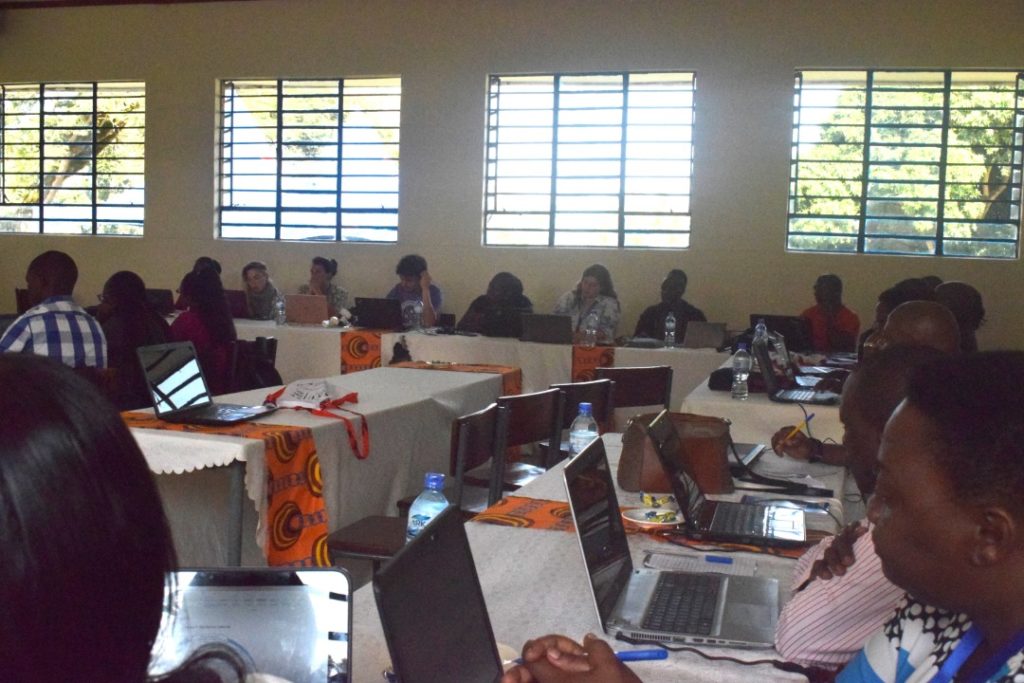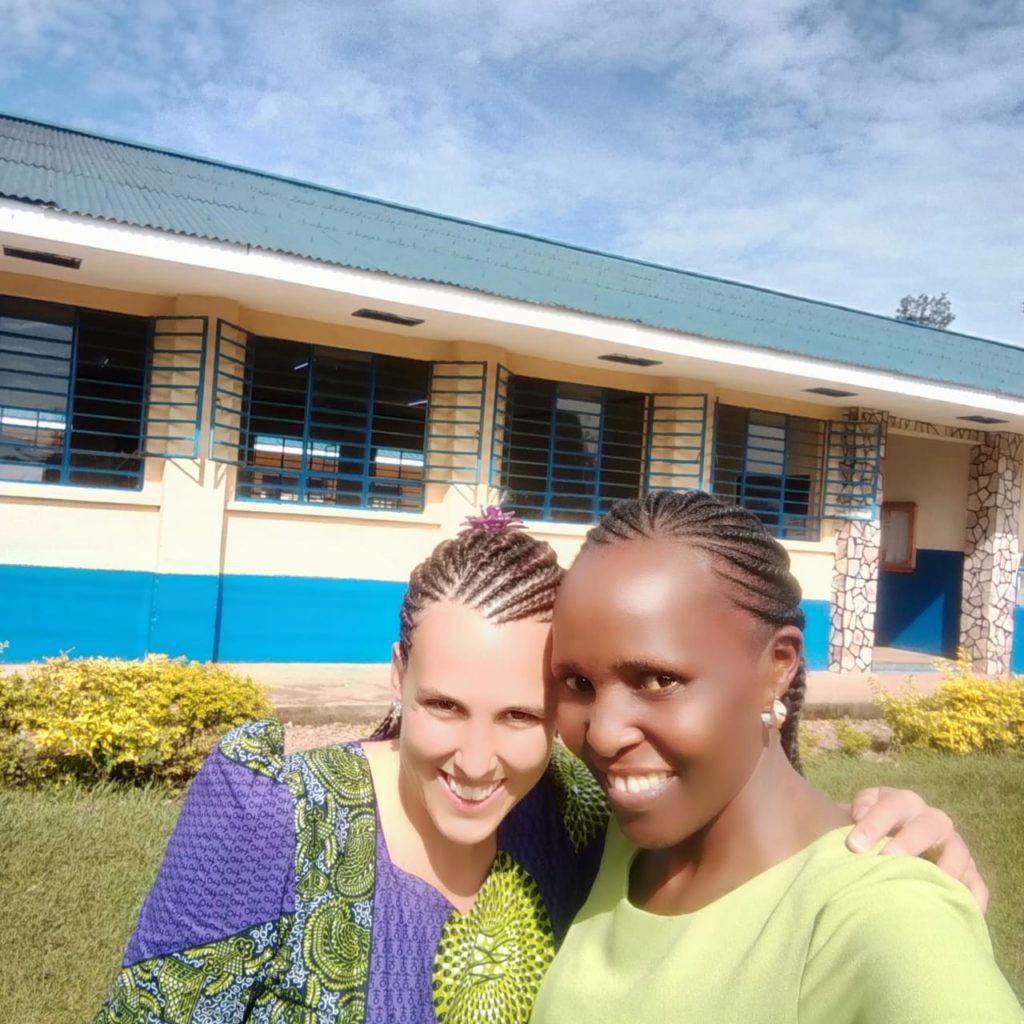Uganda Trip 2019 – Episode 7:
African Braids
While I wrote all the previous episodes in September 2019, just immediately after my return from Uganda, unfortunately I didn’t have the time back then to finish writing down all experiences in detail. Please forgive me that now – 3 years later – I only remember enough details to write 2 more episodes about my Uganda trip. I hope you’ll find them inspiring nevertheless 😉 .
2nd week of Summer School
This episode encompasses the second week of the 1st International Summer School (ISSU) on survey methodology in Uganda.
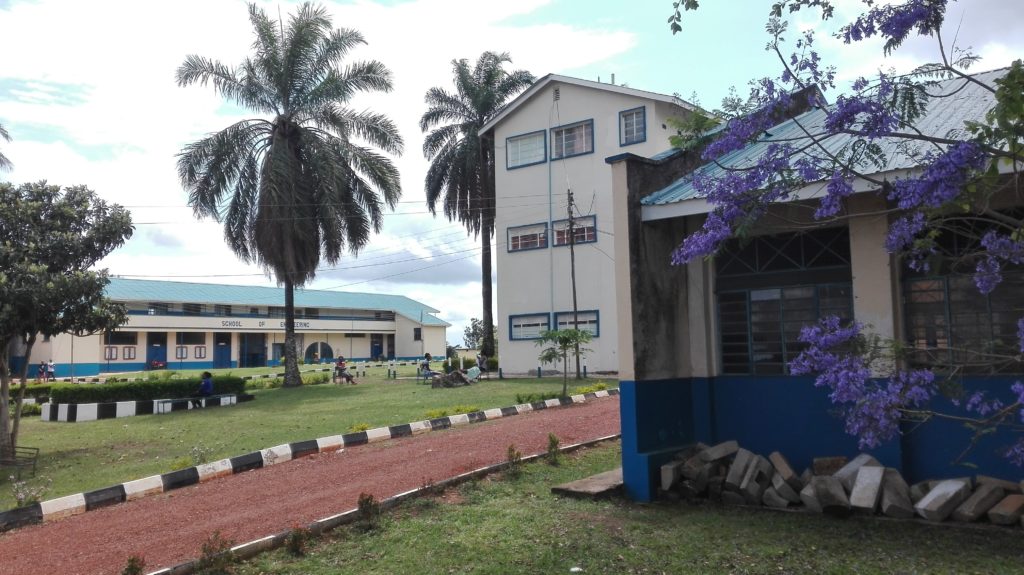
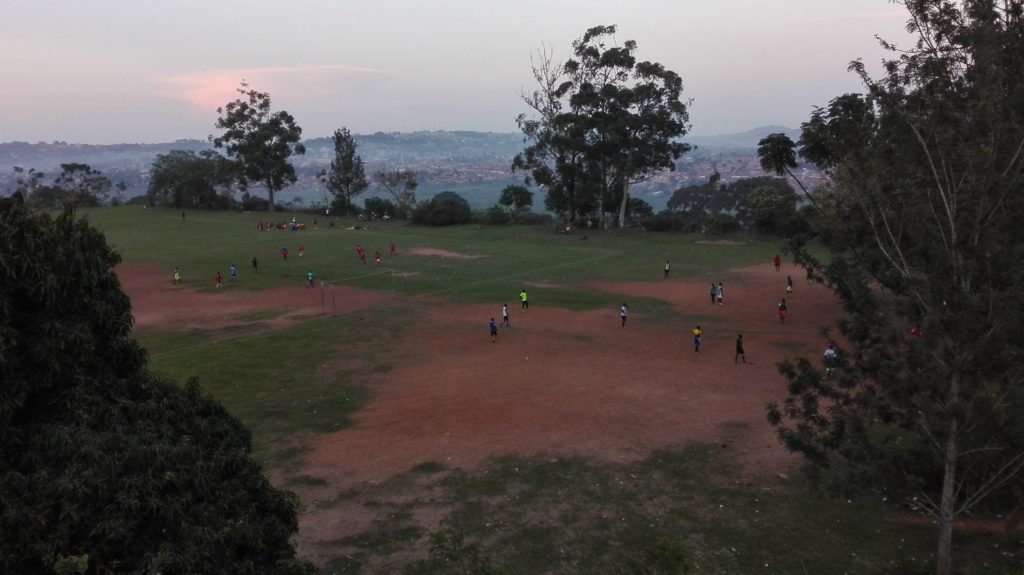

(3) Student accommodations
<Click images to enlarge>
We had been spoiled by Sonila’s inspiring teaching the week before, and so the second week’s course was comparatively boring. One could sense the changed atmosphere from the difference in student participation; While during the first week we had vibrant discussions, in the second week, hardly anybody raised their hands anymore and everybody just glued their eyes on their laptops.
The most exciting events for me this week was getting my hair braided. Many African women have beautiful braids, which makes their hair care easier (and looks pretty 🙂 ). My idol in this respect was a Ugandan colleague who had her hair braided, starting from one side in a star shape:
Rogers was so kind to accompany me to the hairdresser in downtown Masaka, located in the same mall as the clothes shops we went to the week before. The braiding adventure turned out to last for 4 hours! And it was quite an interesting experience: The hair-washing seat was located outside the little hairdresser shop, basically on the corridor of the mall. In the hairdresser shop we had to take our shows off and little babies were once again just running around on the floor. Their was one hairdresser – she was the most experienced one – who started every braid at the top of my head until she reached the back where the hair started to be lose. This is where up to 3 others took over finishing the braid to be quicker.
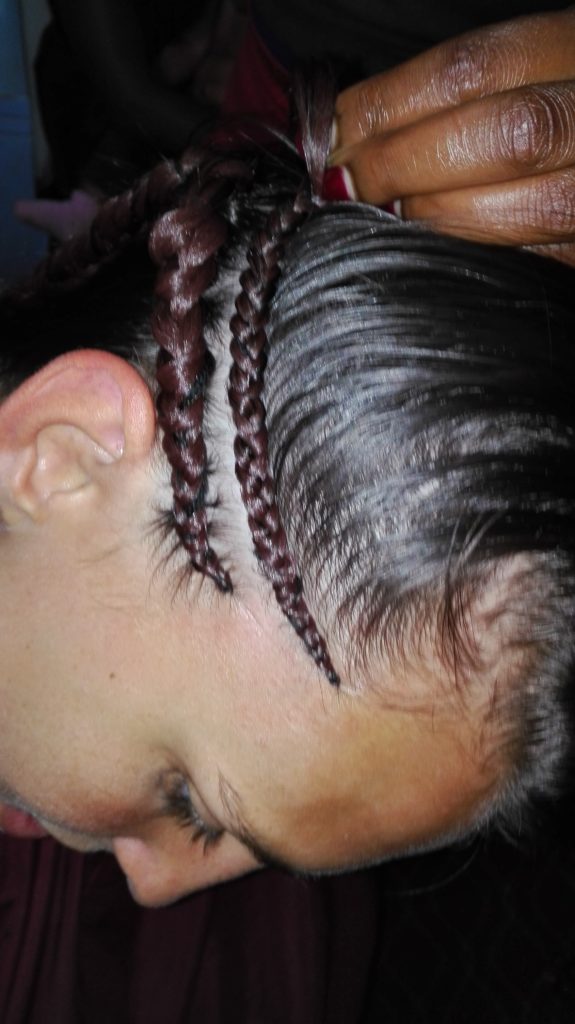
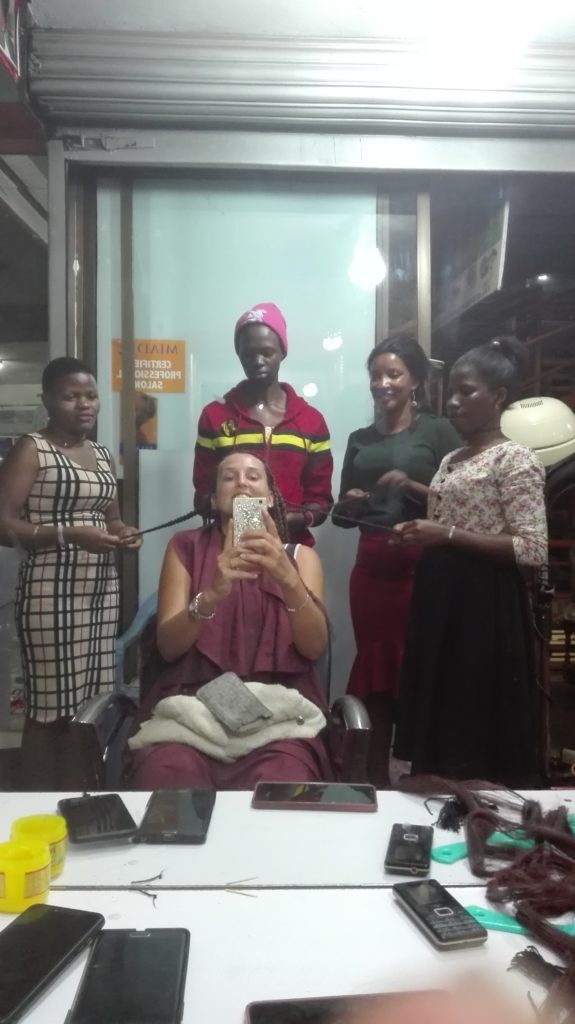
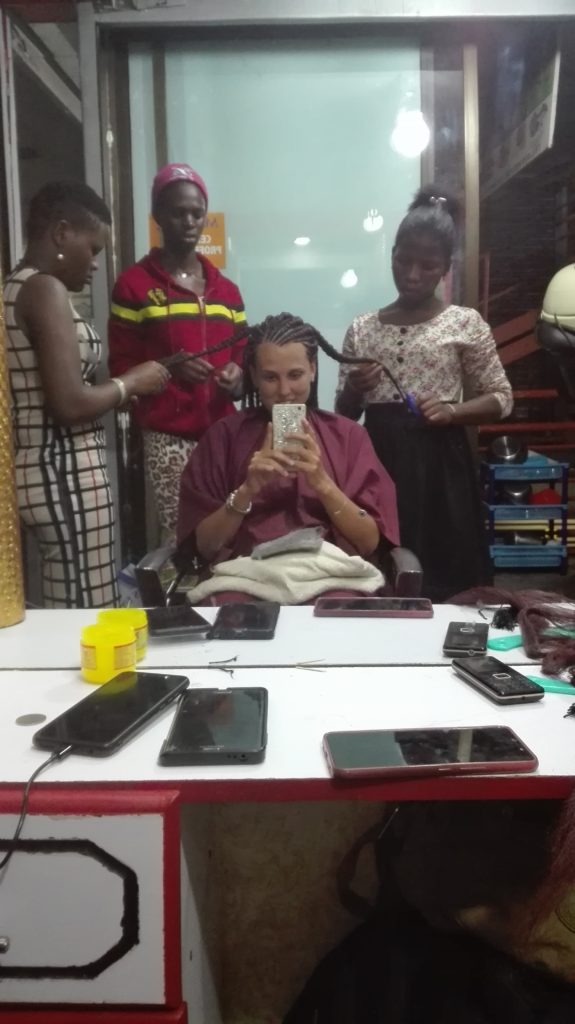
<Click images to enlarge>
The most painful part of it was not actually the braiding (which people had warned me of), but the brushing after the washing. Since the hairdresser didn’t have an appropriate brush for white people’s hair (but only a comb), it took ages and was very painful. I also didn’t feel any pain of the braids on the next day. However, I did feel as if I had gotten a face lift 🙂 . This was the result:
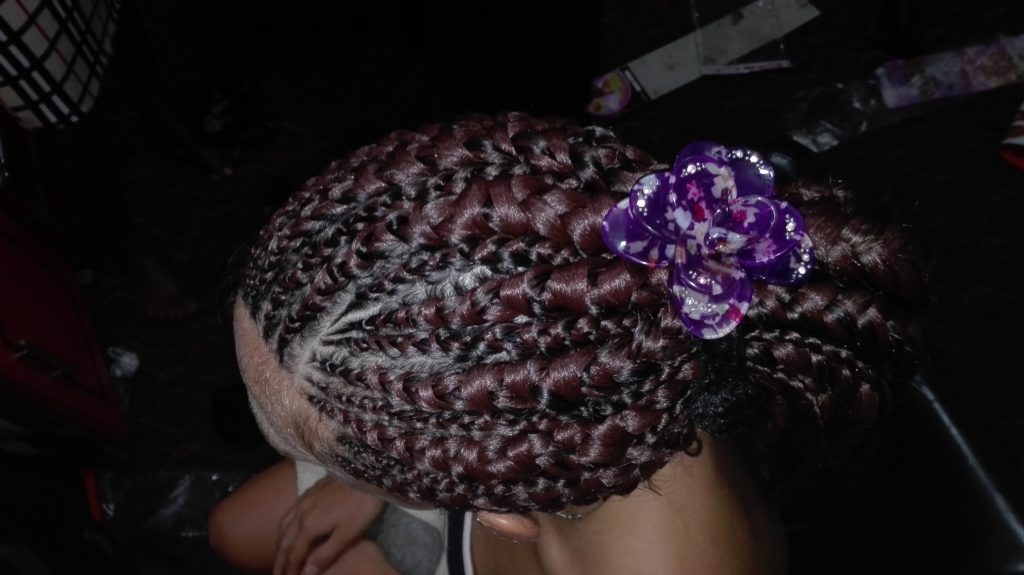
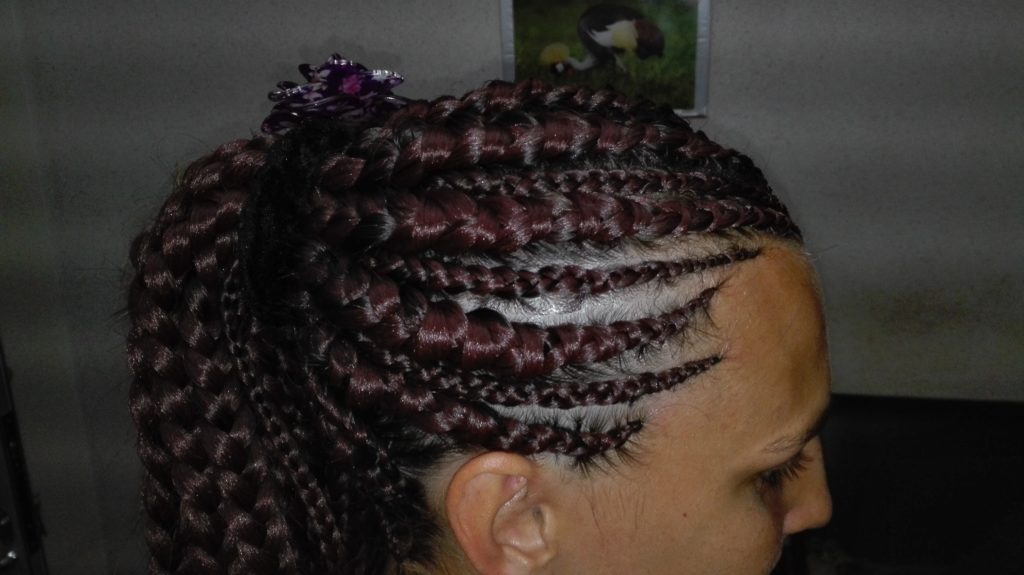
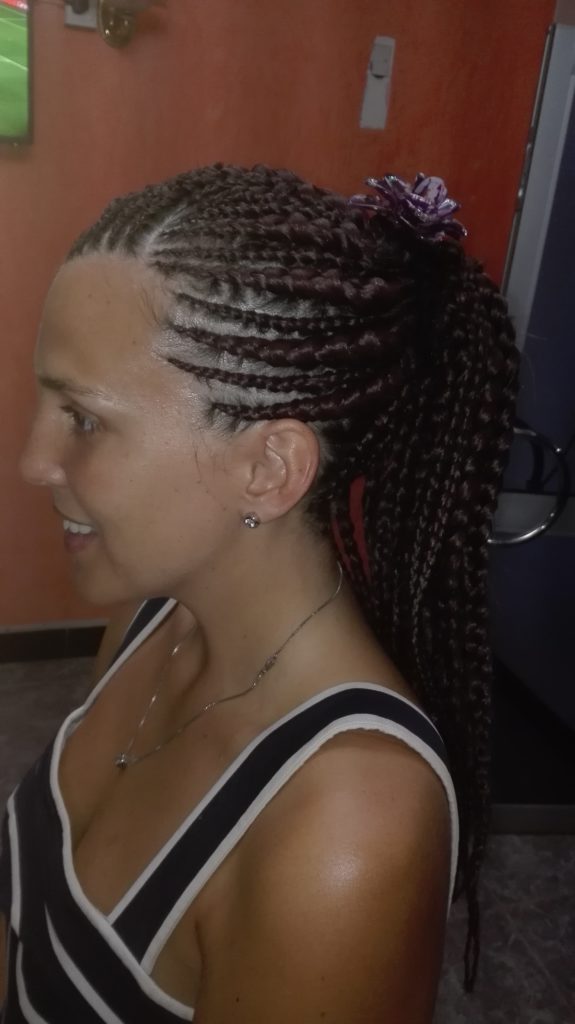
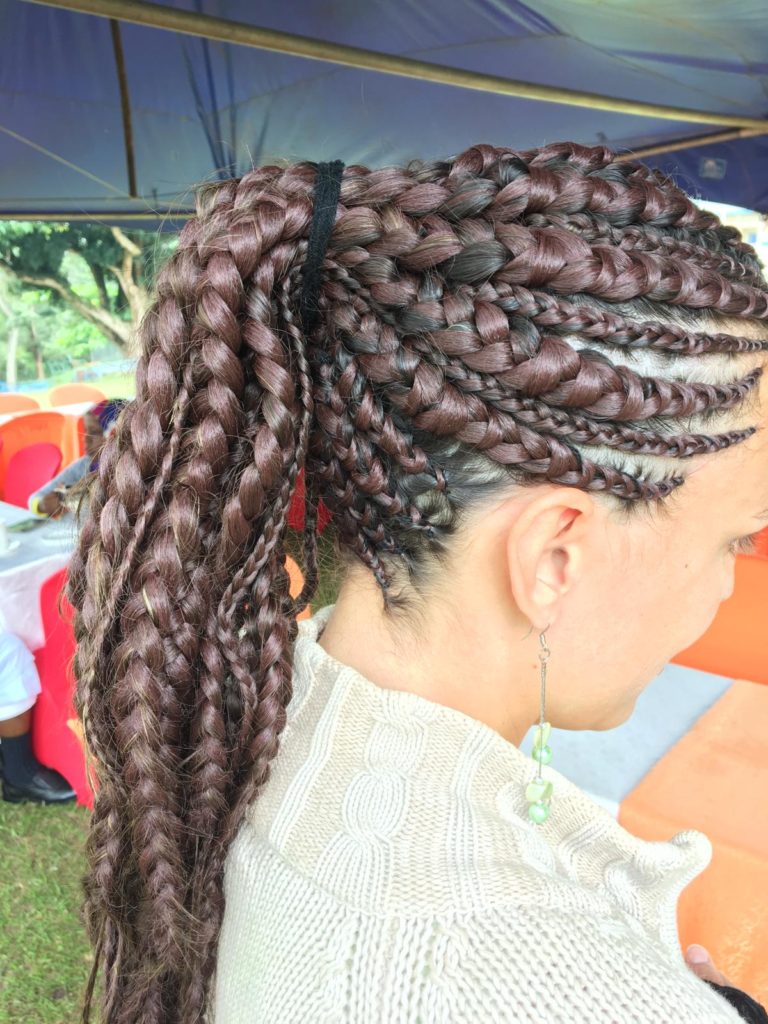
<Click images to enlarge>
Pricky taught me how to wrap a scarf around the braids, so that they won’t get torn through the friction with the pillow while sleeping. Back in Berlin, I would do the same with some stockings, which was the recommendation of Enrique’s sister.
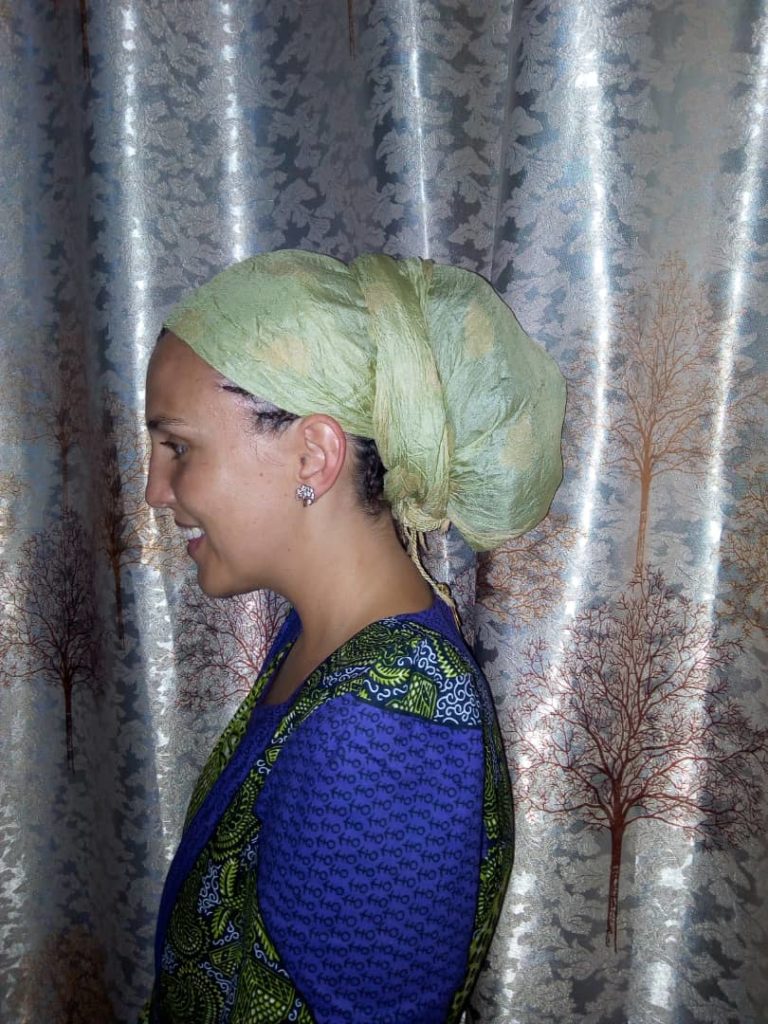
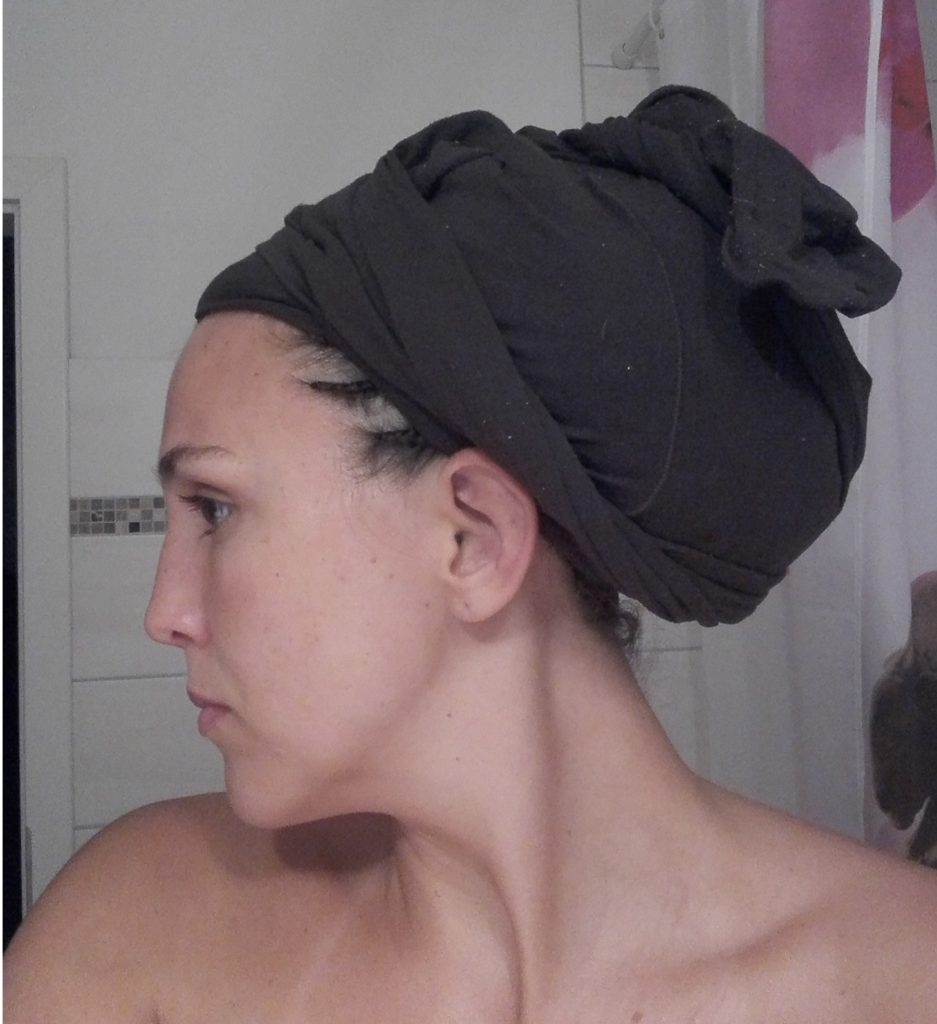
<Click images to enlarge>
You might have spotted from the video above, which shows the braiding in process, that purple extensions were braided into my hair. The reason for this was not to make them longer (although that was a side-effect), but to actually add more hair to my scalp. Otherwise (because the braids are so tight) I would have had more bold areas on my scalp than areas covered by braided hair. Actually, there was 4 times as much extensions used than my actual hair. This added to the experience of having had a face lift, due to the heavy pull. I kept the braids for 2 weeks without washing them (!), which was what some African ladies recommended to me. After the 2 weeks I was happy to remove them, since they were already quite a bit worn-down and my scalp had become itchy from not having washed it for a while. Enrique and me – together – took nearly 2 hours to remove all the braids and extensions!!

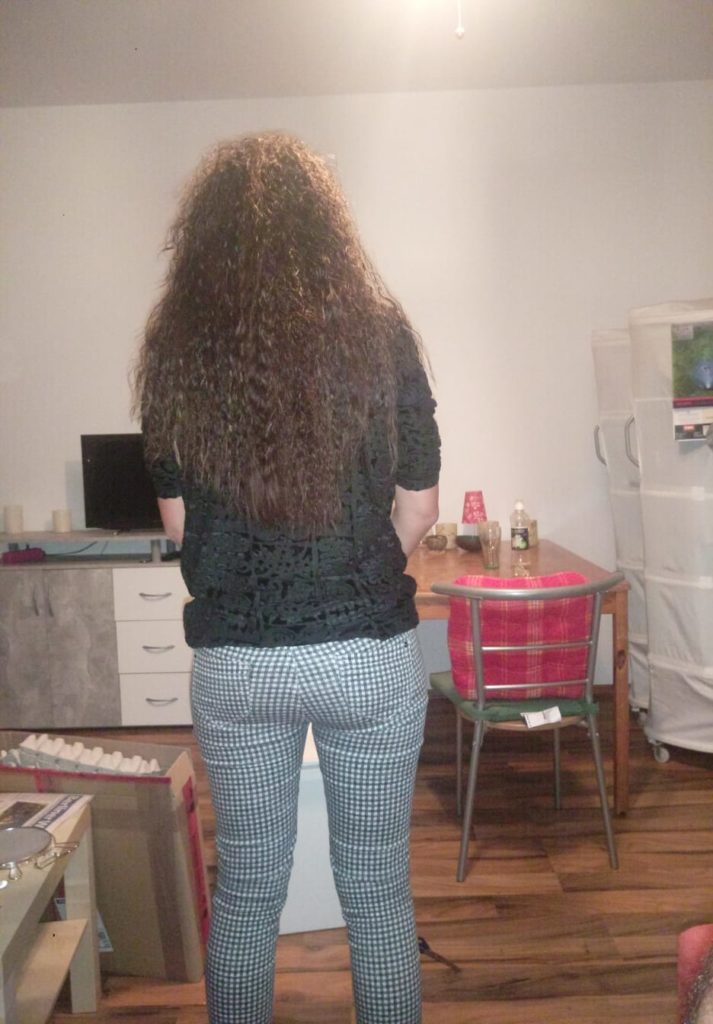

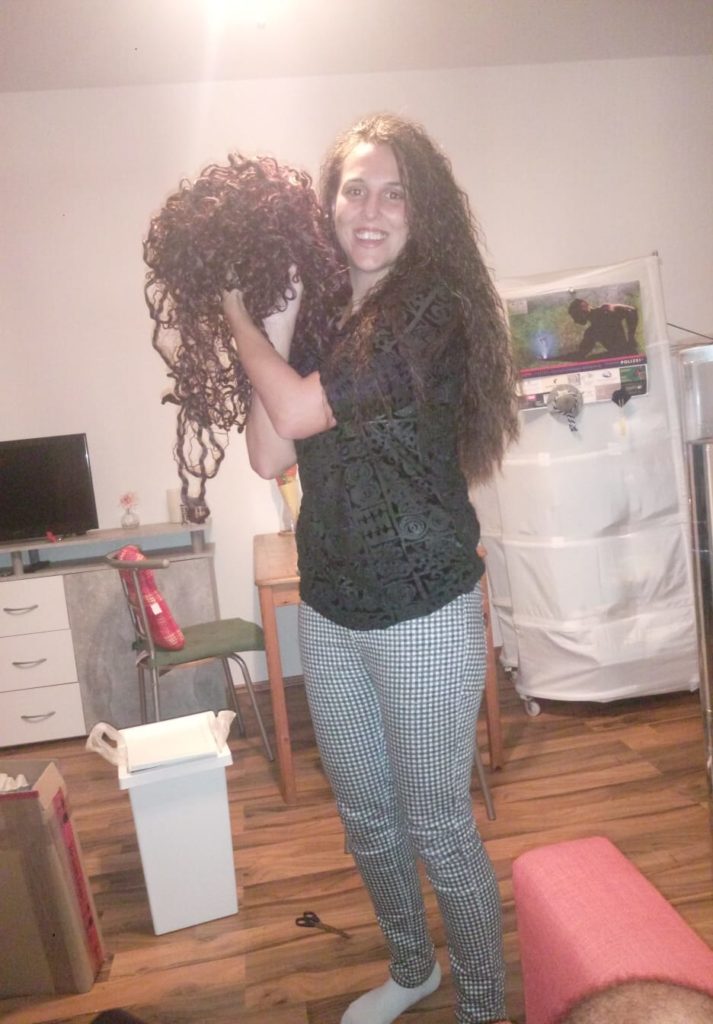
<Click images to enlarge>
Because I hadn’t washed my hair for so long (and hair didn’t have the chance to fall out, because of being locked in the braids), I lost all my lose hair during the wash afterwards – and that was a lot!
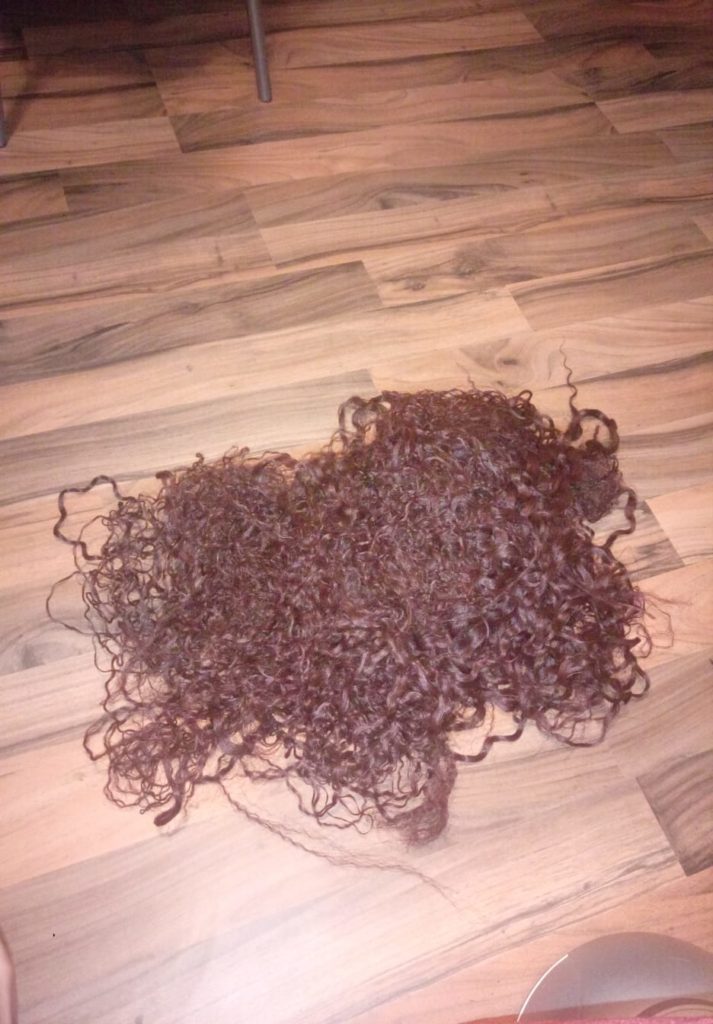
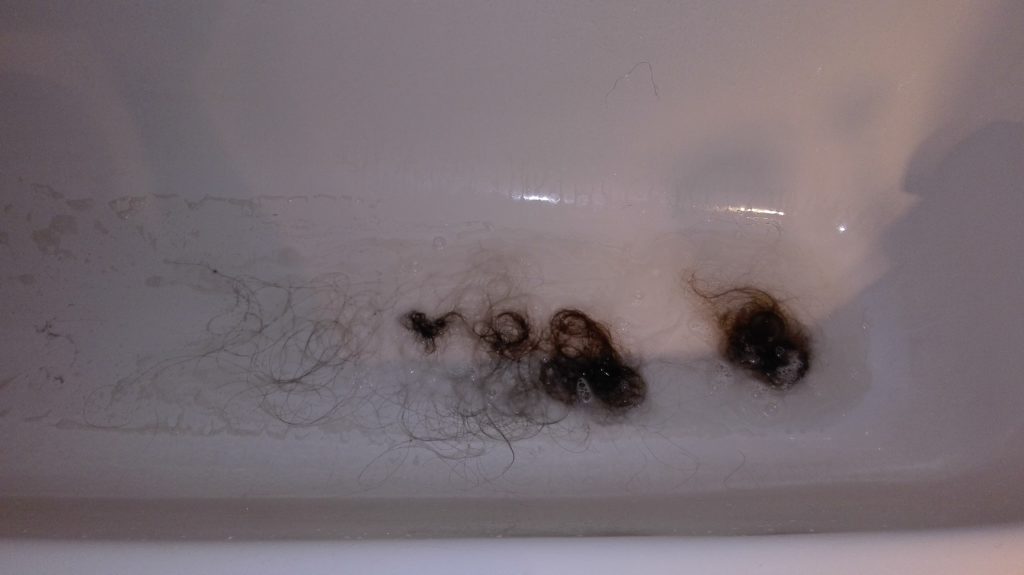
<Click images to enlarge>
Apart from my new hairstyle, I was really proud of my new African outfits I bought the week before. I especially liked to pose with Ugandans also wearing traditional outfits:
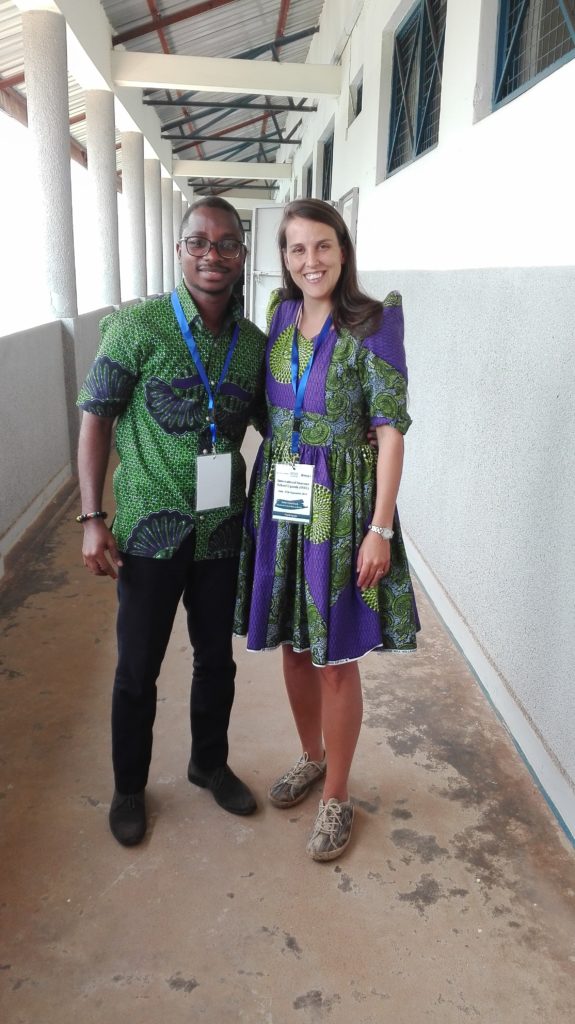
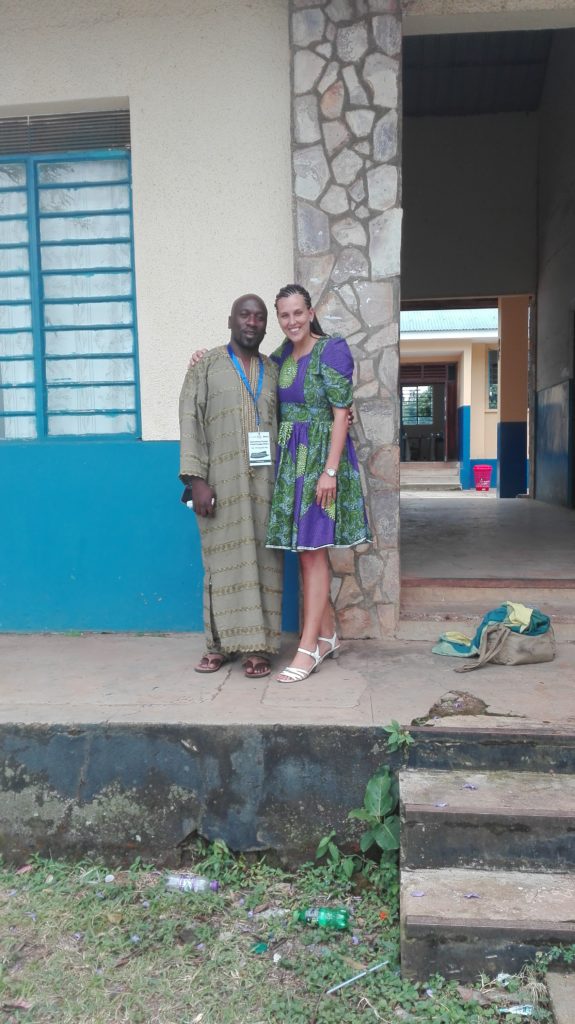


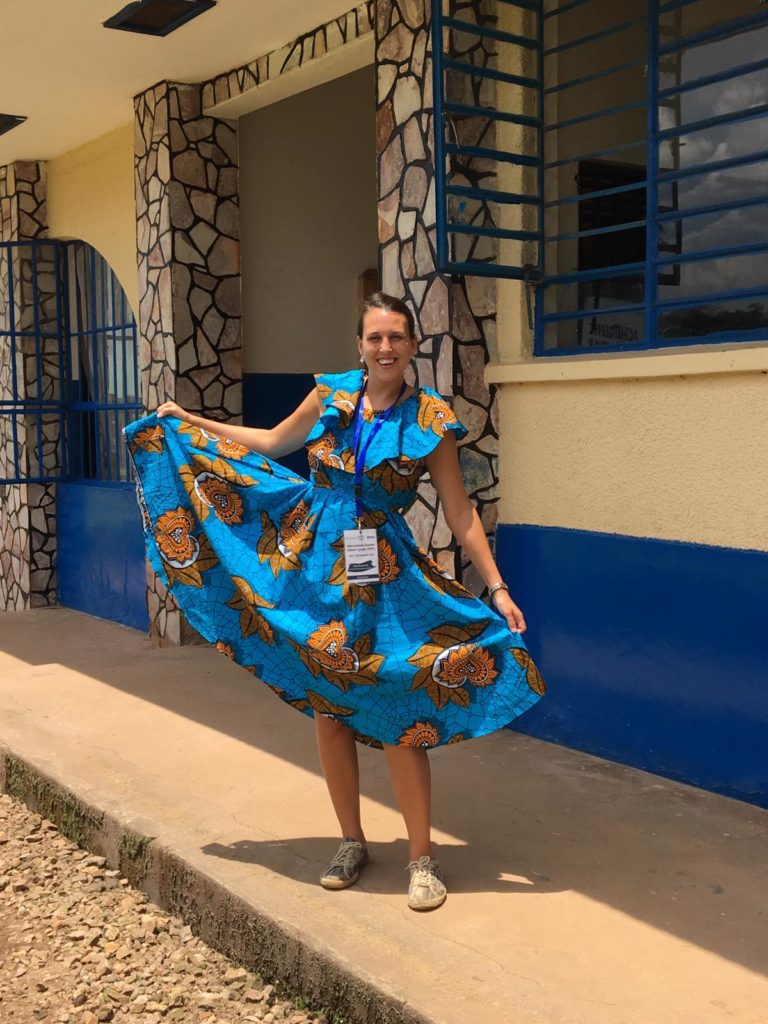
<Click images to enlarge>
During the second week I would also walk often from the hotel to the university, and when it was day light I took some photos:
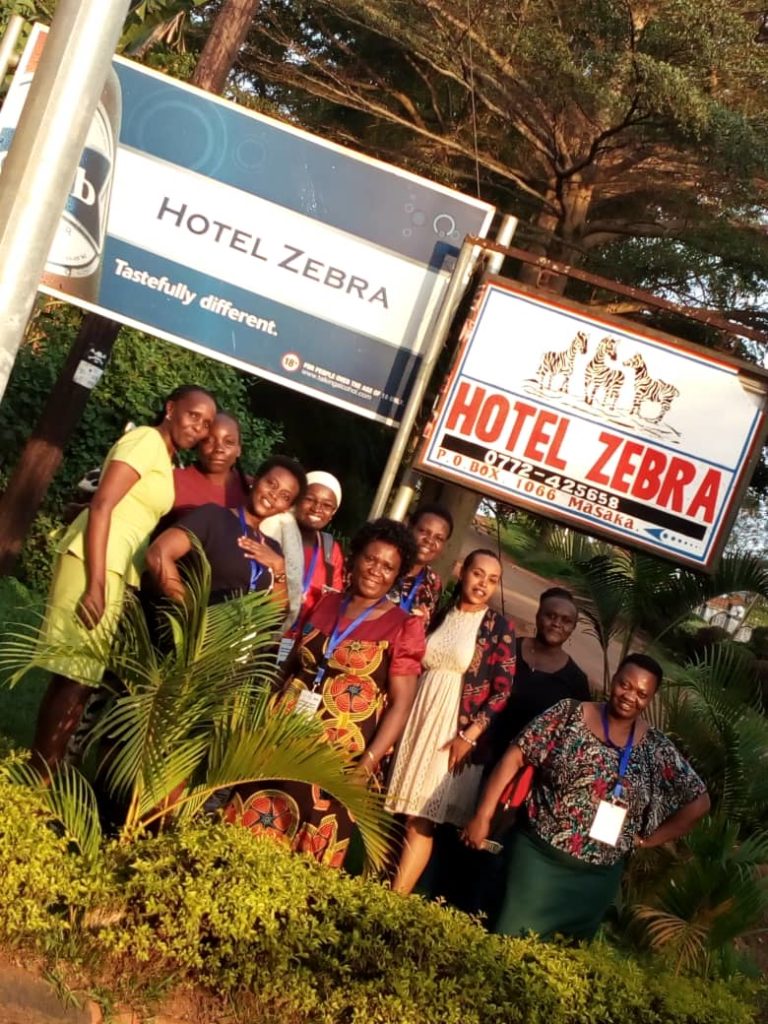
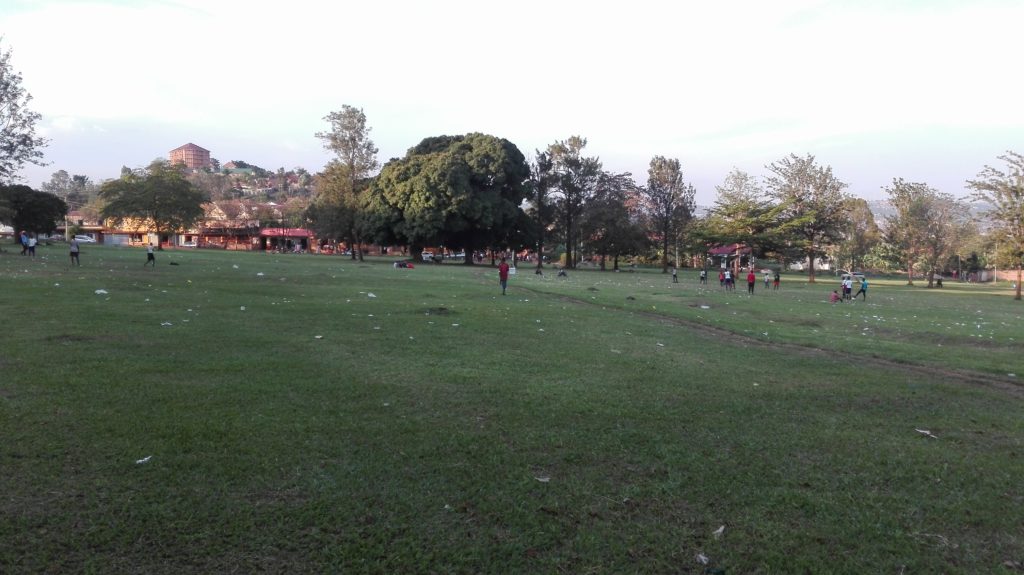
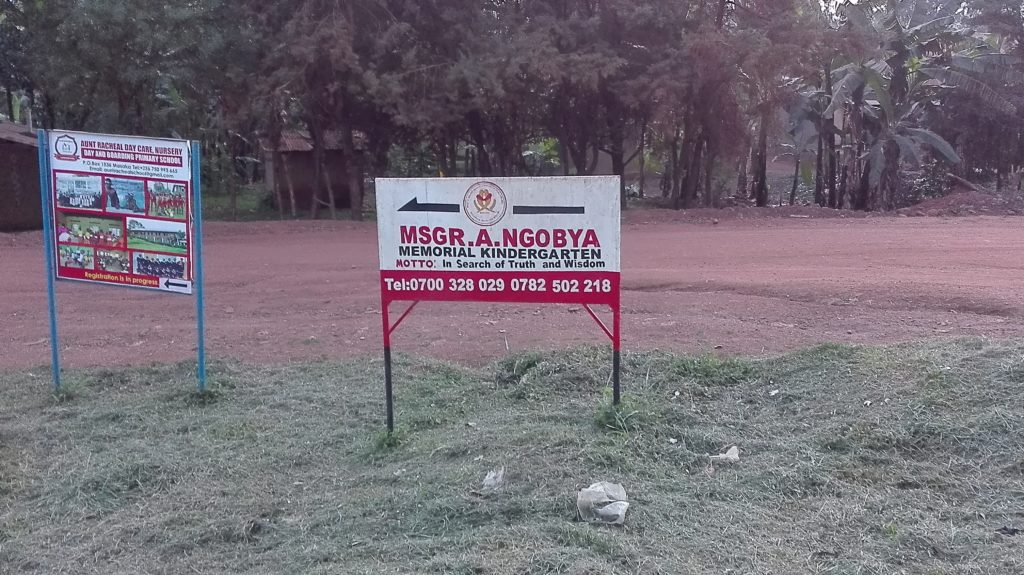
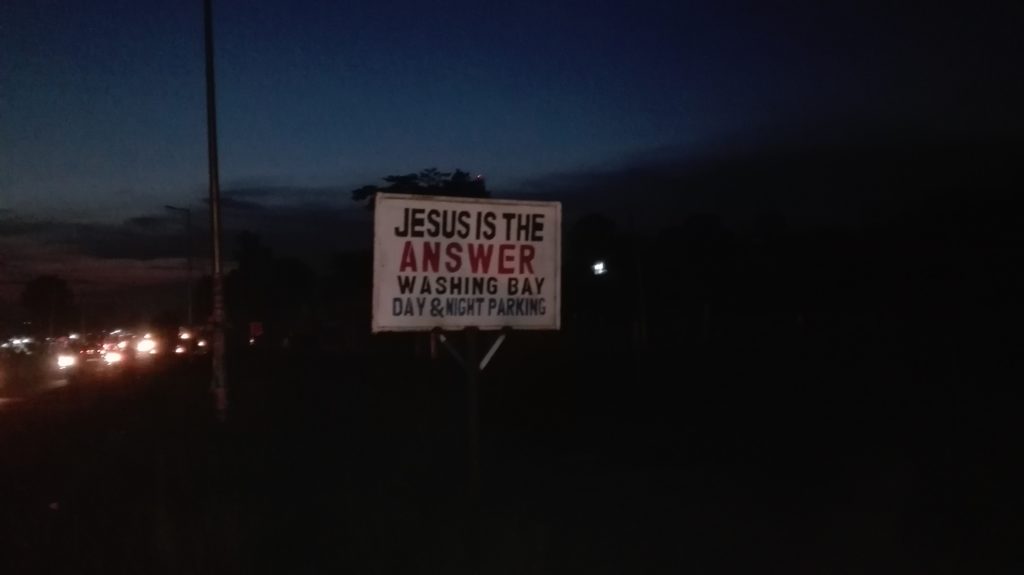
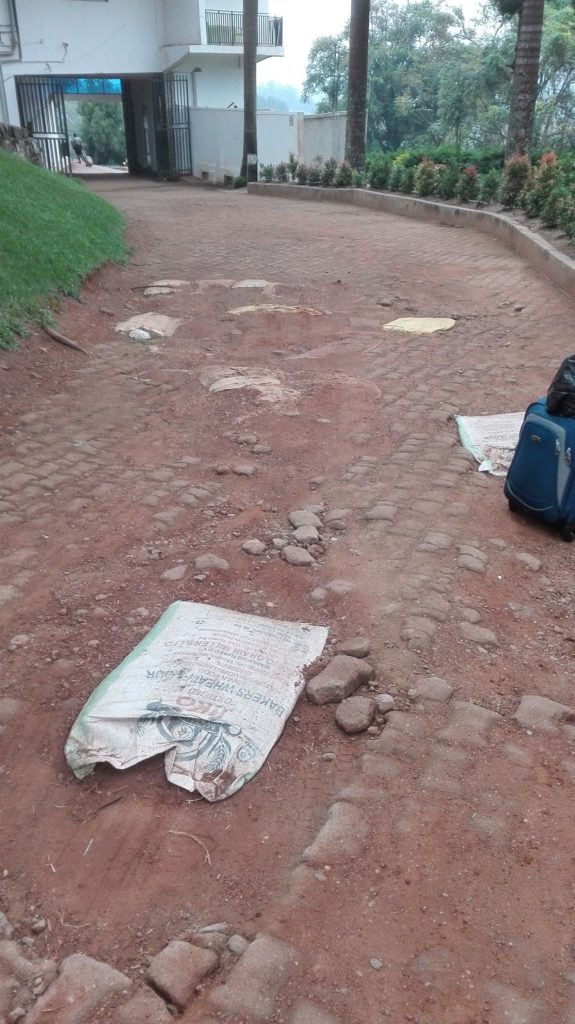
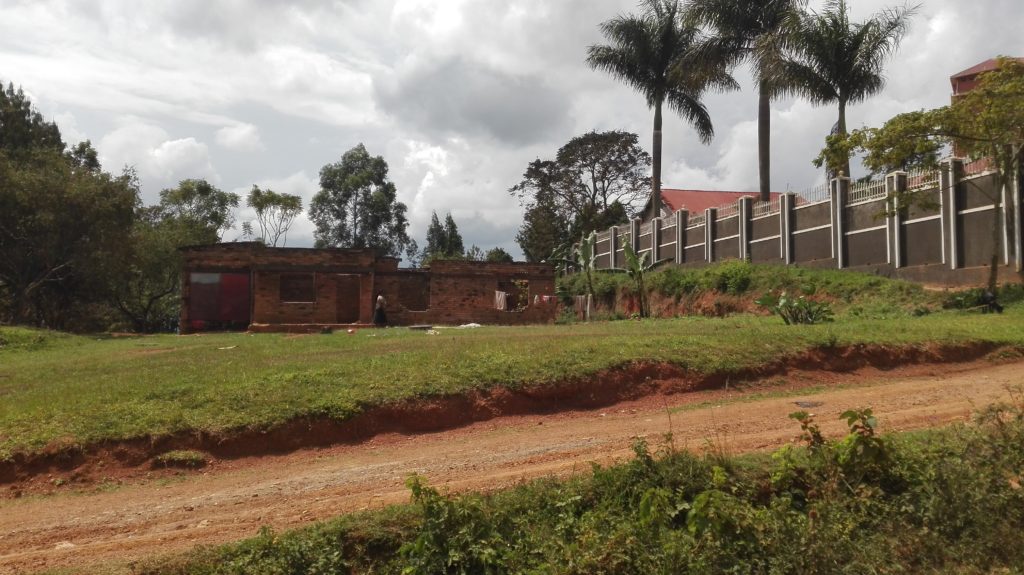

<Click images to enlarge>
A little side-fact that I found really interesting about tropical countries is that the humidity and warmth does nasty things to your stuff. For example, my chewing gums in my handbag kind of melted away and in Costa Rica (November 2020) my boots, my jeans and handbag got moldy (things which were just lying in a corner and were hardly touched).
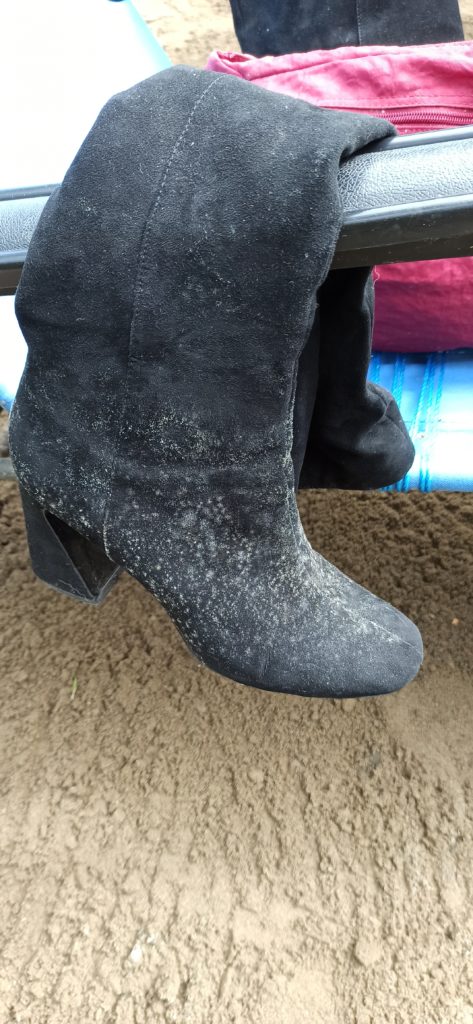
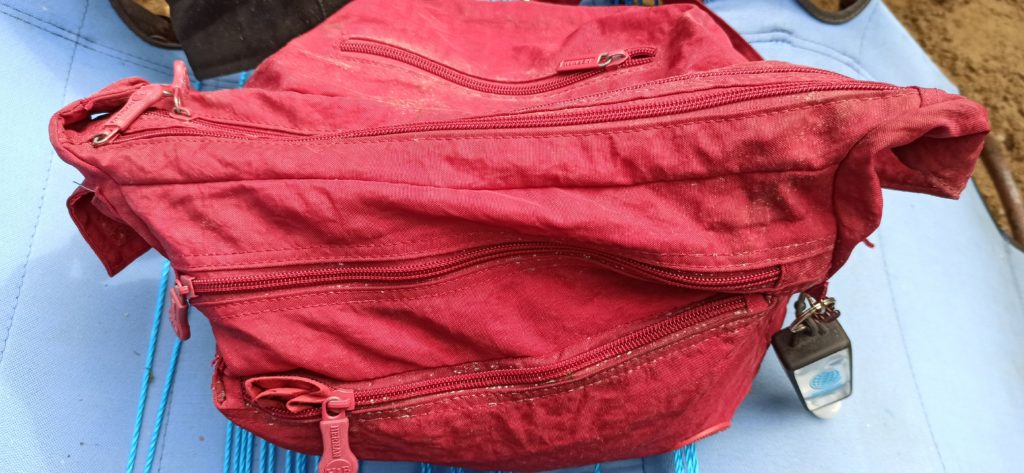
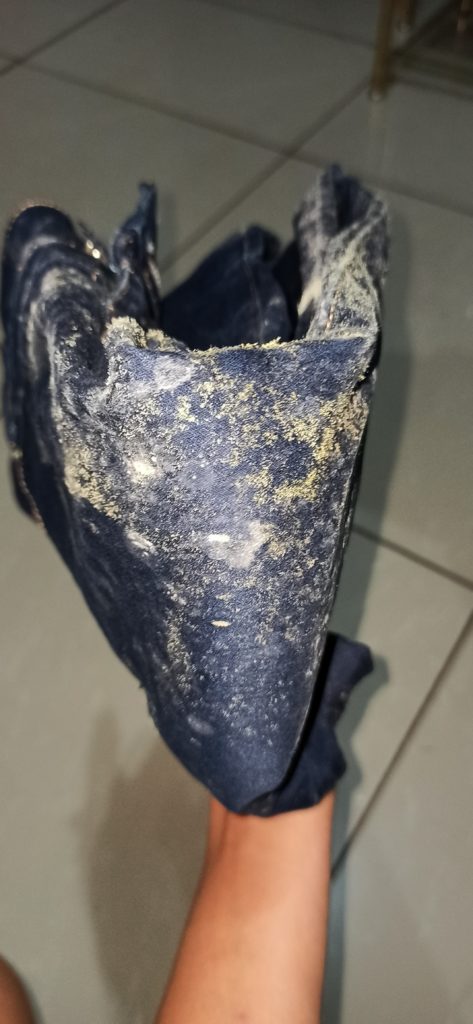

<Click images to enlarge>
One morning, I observed some monkeys on the path of my hotel room to the reception:
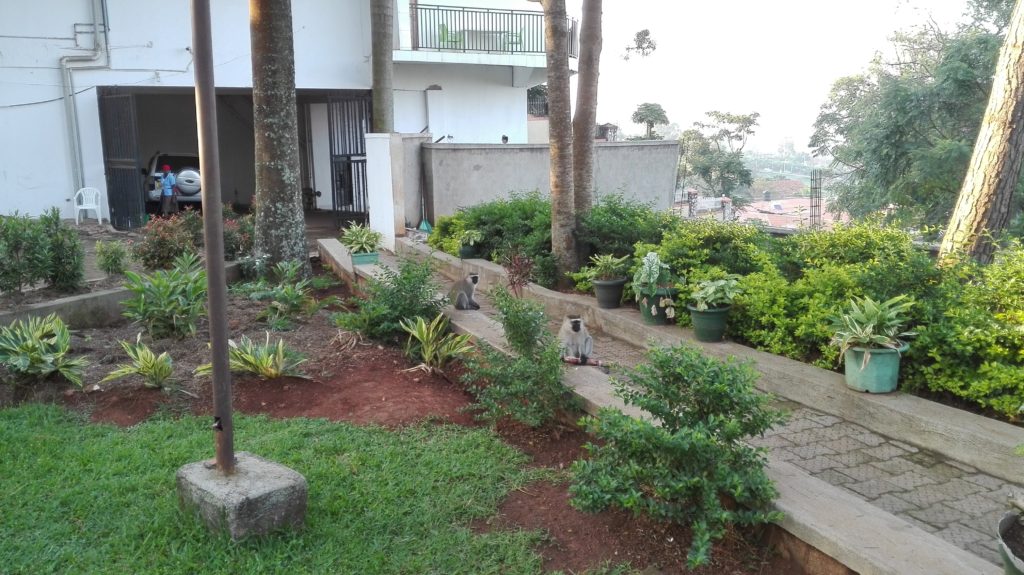

<Click images to enlarge>
On Friday, the last day of our summer school, a student from Muteesa university offered hand-crafted baskets for sale to us, in order to raise funding for his student fees. I found that a really lovely idea – and so I bought some as souvenirs.
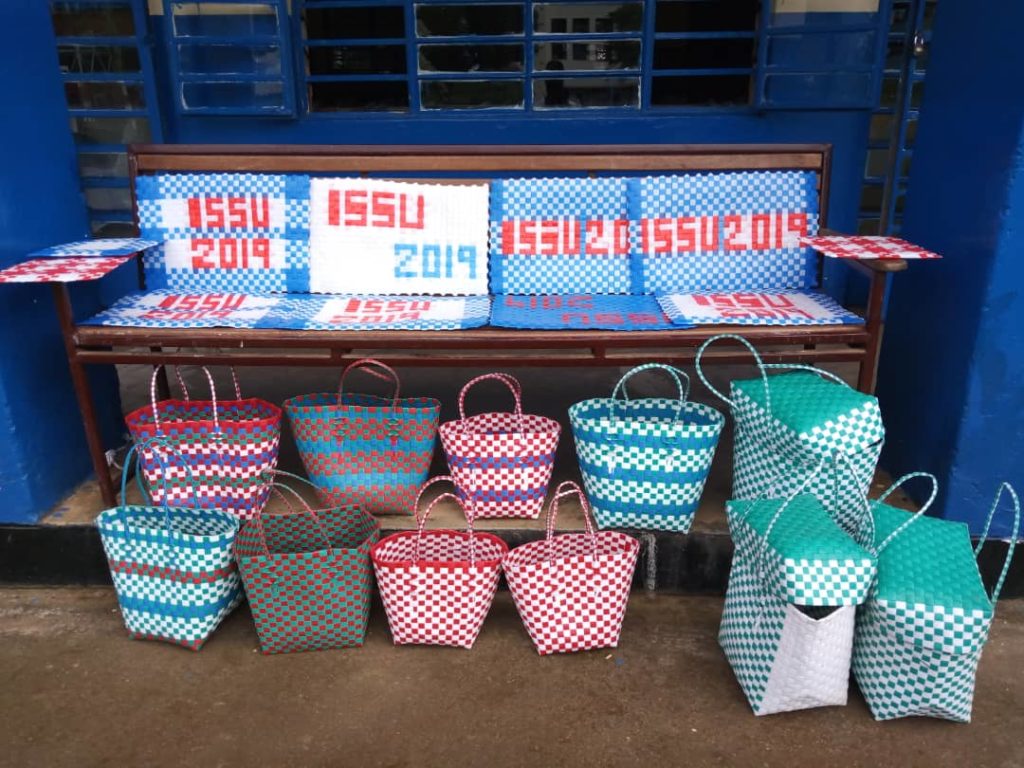

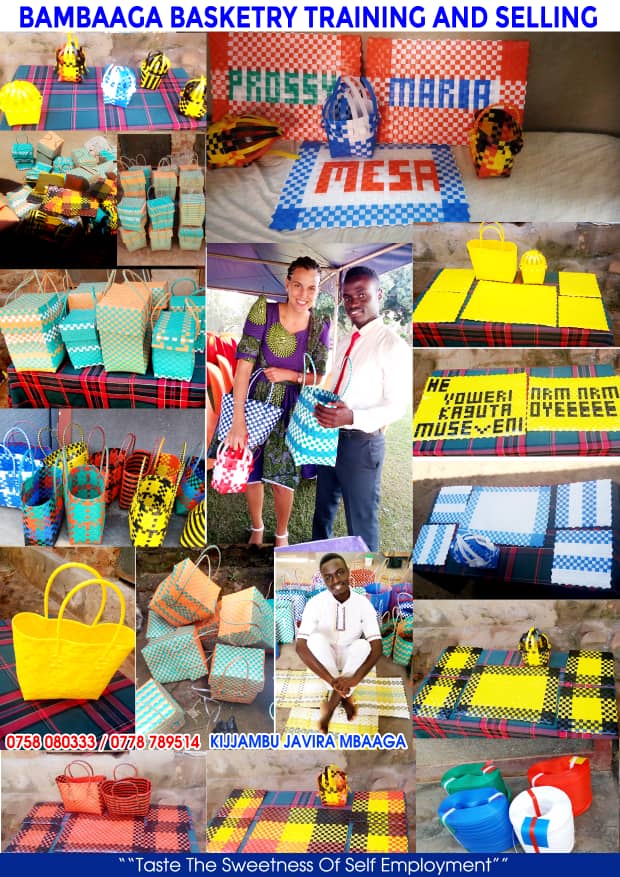
<Click images to enlarge>
On Friday, after the closing ceremony, which had attracted quite some press, we all went to Entebbe on our university bus. Here is some footage of this journey:
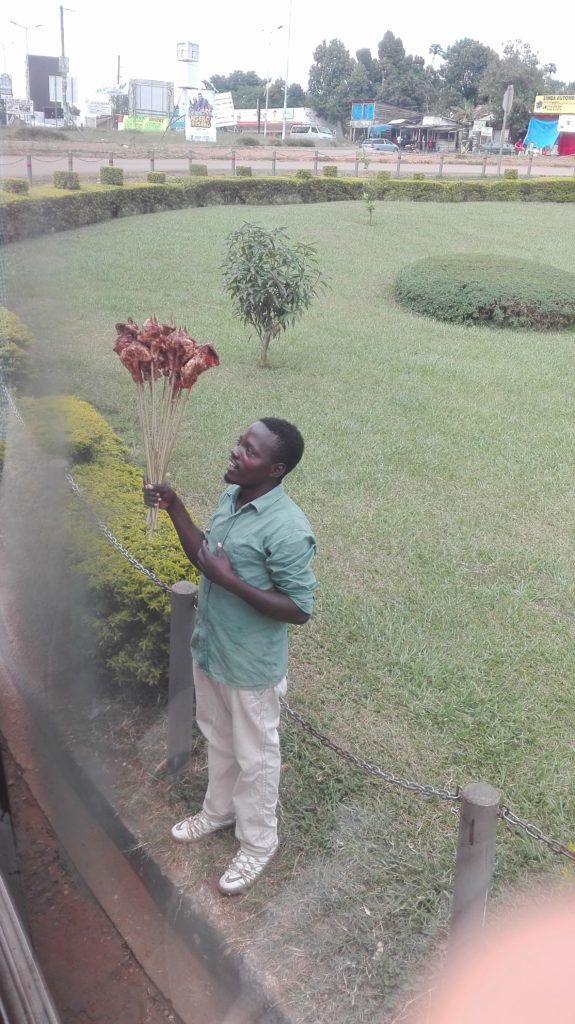
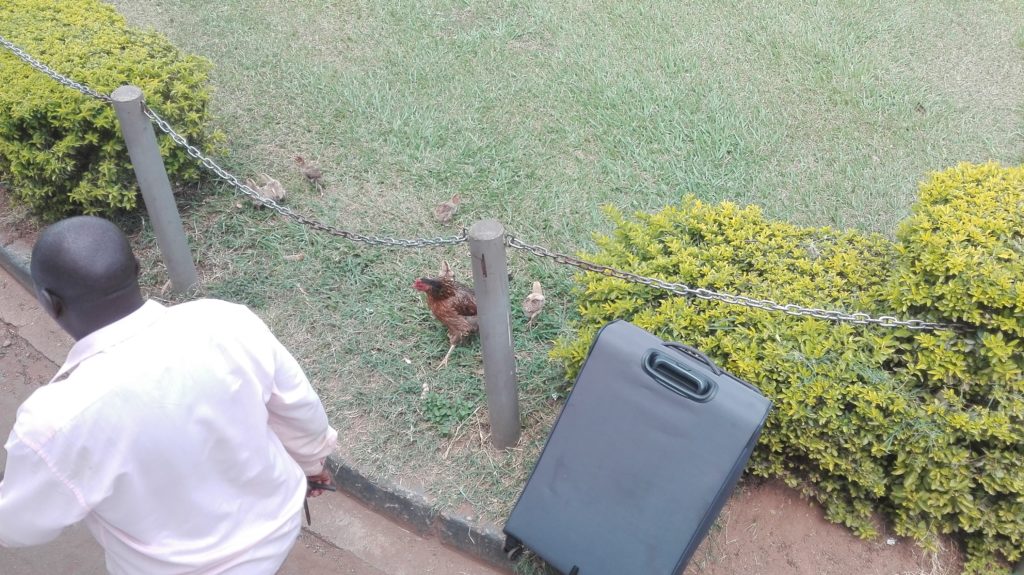
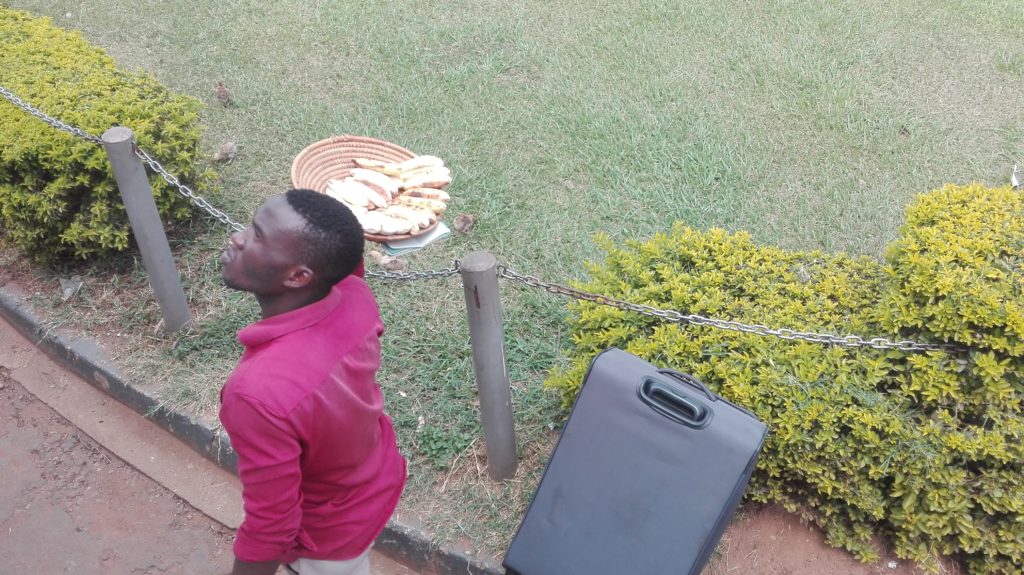
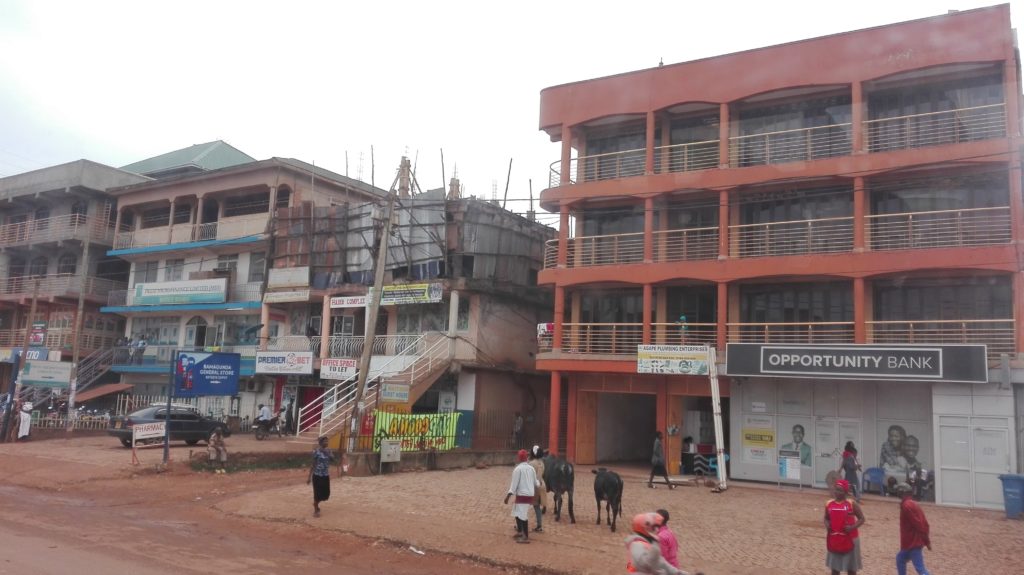
Click here to read the last episode, where I tell you about my stay in Uganda’s capital, or navigate through the Table of Contents:
Table of Contents
- Prologue & Epilogue
- 29hrs from Berlin to Masaka
- First lecture & Shopping in Masaka
- Food & Drinks
- Ugandan Steam Bath & BBQ
- Off to Ssese islands
- A Nature Walk on Ssese Islands
- African Braids
- Kampala – Uganda’s Capital
Written by Julia Heuritsch | Last edited: 14th July 2022
